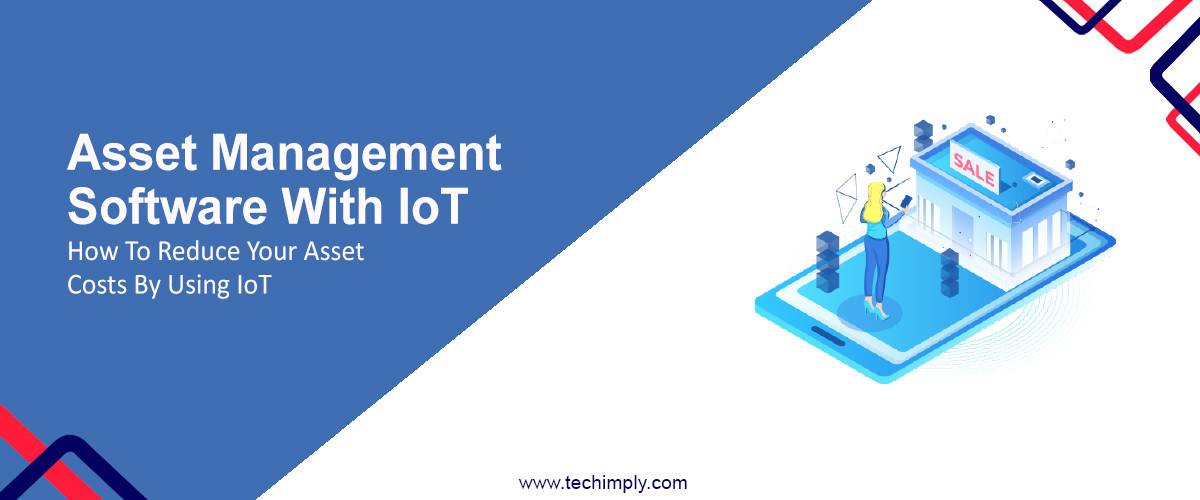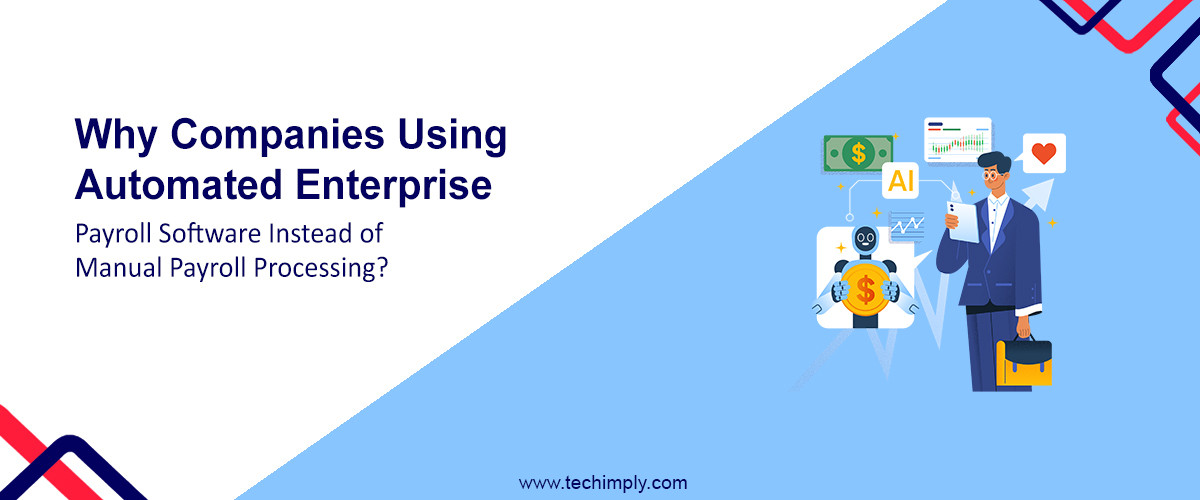Internet of Things (IoT) technology integration has ushered in a new era in the ever-changing field of asset management. The era of manual tracking and reactive maintenance is over, as IoT enables companies to anticipate problems in real time, boost productivity, and significantly save expenses. This in-depth tutorial will highlight the many benefits that IoT brings to Asset management software in the Indian context. I'll cover the whole range, from basic ideas to cutting-edge implementations, to assist organisations in realising the significant advantages of IoT in asset management.
Understanding IoT in Asset Management How It Works?
The connection between systems and devices, which permits data flow without direct human intervention, is at the heart of the Internet of Things. In the context of asset management, this refers to a network of real-world objects that have sensors and software built into them that enable data collection and sharing.
Organisational processes are being revolutionised by the integration of Internet of Things technologies into asset management software. IoT asset management is changing operating standards by offering real-time insights into equipment health, which leads to predictive and preventative maintenance. These developments make IT service management (ITSM) software to take a proactive approach to maintenance, guaranteeing continuous operations and economical asset use.
Handling the Shift from Reactive to Predictive Upkeep
In the past, maintenance procedures were only carried out in response to equipment failure. Predictive and preventive maintenance, however, has become more popular since the Internet of Things was introduced to asset management. Asset sensors gather operating data, which is then processed to forecast when maintenance is required. This foresight lowers maintenance costs, eliminates the need for spare components, and minimises downtime.
The Use of Real-Time Data in Increasing Efficiency
IoT devices collect performance data on assets continually. Because there is an excess of real-time data available, advanced analytics may be performed, which promotes asset efficiency. Upon receiving prompt alerts of any deviations, organisations may promptly address problems, uphold quality, and minimise the possibility of expensive downtime.
Implementing IoT in Asset Management
Using IoT top asset management software calls for a calculated strategy. Essential procedures include integrating hardware and software, educating staff, and guaranteeing safe data handling. Organizations may realize the full benefits of implementing Industrial IoT applications once they deploy them successfully.
Selecting the Proper IoT Platforms and Devices
- For a seamless connection, choosing the right IoT platforms and devices is essential. The three most important factors are scalability, compatibility, and dependability. A platform for managing IoT assets should be able to process various data sources and turn them into insights that can be put to use.
Educating Your Staff on Integration with IoT
- The proficiency of your staff is critical to the success of IoT integration. Enforcing mandatory training on novel procedures, instruments, and frameworks guarantees that staff members can optimise the potential of IoT technology.
Keeping an IoT Environment Secure
- Because sensitive data is transferred and stored via IoT, security is a critical component of the implementation. The IoT ecosystem is strengthened against possible intrusions by utilising strong security features including multi-layer access restrictions and encrypted communication routes.
The Cost-Saving Benefits of IoT in Asset Management
The implementation best asset management software has noteworthy prospects for enterprises to save expenses.
Minimising Unexpected Downtime
- An organisation may suffer catastrophic financial losses due to unplanned downtime. Predictive maintenance features of IoT significantly lower the possibility of unplanned equipment breakdowns, minimising the effects on production schedules and associated expenses.
Managing Stock More Efficiently
- Internet of Things (IoT) enables optimal inventory management by tracking asset performance and consumption trends. By keeping the right amount of spare parts on hand to meet maintenance requirements without going overboard, businesses may significantly save their inventory costs.
Increasing Asset Lifecycle
- IoT's ability to prolong asset lifespan is a significant financial benefit for asset management. Early problem detection and prompt maintenance reduce asset wear and tear, extending their useful lives and lowering the need for replacement.
Data-Driven Decisions and IoT in Asset Management
Businesses may make more informed decisions that have a direct impact on their bottom line because to the Internet of Things' ability to gather and analyse data.
Making Predictive Analytics using Historical Data
- Over time, IoT systems generate enormous volumes of data. By utilising sophisticated analytical techniques to use this historical data, predictive modelling may be performed, enabling strategic decision-making that maximises asset performance and utilisation.
Getting to the Top of Operations Using Benchmarking
- IoT makes it easier to benchmark against best practices and standardised data. Companies may find and fix inefficiencies through continuous improvement and cost reduction by comparing their performance to industry benchmarks.
Agile Operations and Constant Improvement
- Through IoT-enabled continuous operation monitoring, firms may embrace an agile management strategy. Reacting quickly to real-time data in processes and procedures results in significant cost savings and operational excellence.
Overcoming Challenges in IoT Integration
Even while IoT has many benefits for asset management software, there are drawbacks to take into account before integrating it.
Issues with Compatibility and Legacy Systems
- Compatibility issues arise when integrating IoT with current top asset management software, especially with older systems. To integrate these systems with IoT technology, upgrading or replacing them may need a large financial commitment and careful planning.
Data Standardisation for Useful Purposes
- IoT devices create an abundance of help desk software that may be deluged with information. It is a difficult process that calls for sophisticated analytical skills to standardise this data so that it may be readily understood and used in practical ways.
Taking Care of the IoT Implementations' Scale
- Coordination of a large number of devices over a wide network is necessary for IoT implementation at scale. Keeping these gadgets operating reliably and handling the overwhelming amount of data may be difficult tasks.
Case Studies of Successful IoT Implementations
Examples from everyday life provide light on the useful applications of IoT technology in asset management software. Analysing successful examples reveals areas where costs might be cut and operations could be improved.
The Industry of Manufacturing
- IoT technology has completely changed how assembly lines and equipment are operated in the manufacturing industry. Manufacturers have achieved considerable reductions in maintenance costs and downtime by integrating sensors that track the health and operation of their machines.
Logistics and Transportation
- IoT is being used by logistics and transportation businesses to track and license management software their fleets. The danger of failures and related expenses is decreased by prompt maintenance made possible by real-time vehicle condition monitoring.
Management of Energy and Utilities
- IoT sensors have been used by utilities to keep an eye on energy distribution and production systems. By helping to spot inefficiencies and possible failure areas, these sensors help to ensure a steady supply of energy and avoid expensive interruptions.
The Future of IoT in Asset Management Software
Prescriptive and predictive maintenance will become the standard rather than the exception in the future, according to the direction that best asset management is taking. IoT technology will get even more advanced as AI and machine learning advances, recognising and resolving problems with little to no human participation.
Autonomous Operations and AI Integration
- When AI is included into IoT systems, assets will be able to operate autonomously and make choices in real time based on analytical findings. This degree of automation will minimise operational expenses and increase efficiency.
Prescriptive Maintenance's Ascent
- Prescriptive maintenance offers particular advice and fixes for asset problems, going beyond prediction models. Prescriptive maintenance will become more precise with IoT, significantly simplifying processes and reducing expenses.
New IoT and Asset Management Frontiers
- IoT technology may be used to new heights in asset management software, including the employment of drones for asset inspection and the creation of "smart cities," which would include IoT-enabled public infrastructure that is all connected and monitored.
Metrics to Track the Efficacy of Asset Management Software With IoT
- Asset Utilisation: Evaluates how well resources are being utilised in relation to their full potential. High utilisation is an indicator of excellent resource management, demonstrating how well the programme finds and deploys resources as needed.
- Upkeep Costs: Keeps tabs on the expenses related to asset upkeep. A decline in maintenance expenses over time indicates that the software and IoT technologies are successful in anticipating and averting any malfunctions, which lowers the need for repairs.
- Operational Downtime: Measures the duration of non-operational asset time. Software for best asset management software that is effective should schedule preventive maintenance and anticipate possible malfunctions to save downtime.
- Energy Consumption: Keeps track of an asset's energy usage. Software for asset management with IoT capabilities may optimise energy use, resulting in more cost-effective and environmentally friendly operations.
- Asset Lifecycle: Assesses an asset's life from purchase to disposal methods. An extended asset lifespan shows how well the programme manages and preserves assets, making sure they are utilised effectively for as long as feasible.
- Occurrences Associated: Safety and Non-Compliance with Regulations: Monitors the quantity of occurrences involving safety and non-compliance with regulations. The software's capacity to guarantee that assets are running safely and in compliance with industry norms is demonstrated by a decrease in such events.
By monitoring these metrics, organizations can assess the effectiveness of their asset management software integrated with IoT technology, ensuring assets are managed efficiently, safely, and cost-effectively.
Conclusion
Integrating Asset Management Software with IoT technology presents a groundbreaking approach for businesses looking to optimize their asset utilization and dramatically reduce costs. By leveraging real-time data and insights provided by IoT devices, organizations can achieve unprecedented levels of operational efficiency, enhance the lifespan of their assets, and significantly decrease maintenance and replacement expenses. For platforms like Techimply, offering such innovative solutions not only sets a new benchmark in the Indian software industry but also empowers businesses to stay ahead in the competitive landscape through smart, data-driven decision-making. This synergy between asset management and IoT is not just a cost-saving strategy; it's a transformational shift towards more sustainable and profitable business operations.






